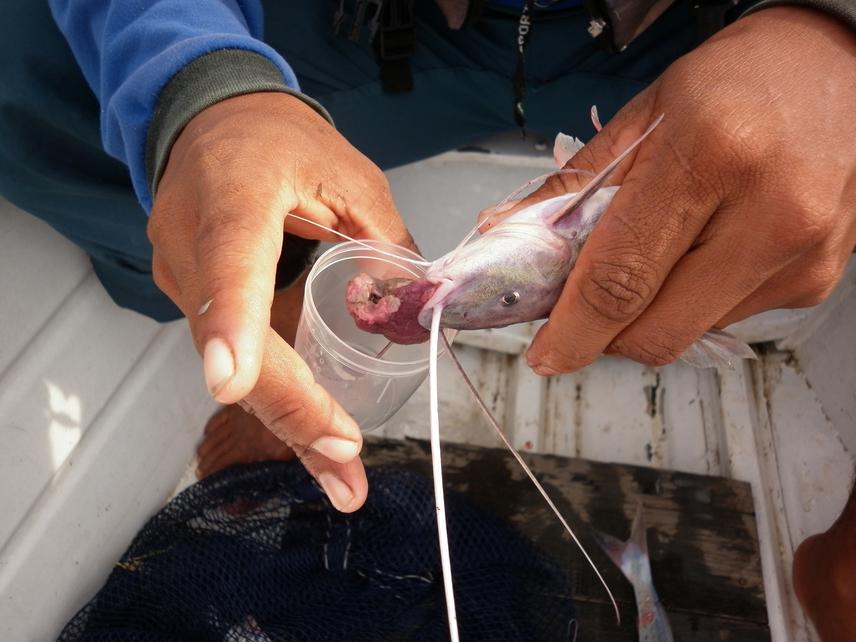Veronica Iriarte
The aims are to study the existing interactions (incidental captures, intentional kills, competition for fishing resources) of the Amazonian river dolphins with fishing activities at the MSDR and ASDR.
Low resiliency of rivers and increasing anthropogenic activities make freshwater cetaceans to be considered vulnerable. In Amazonia the interactions of boto (Inia geoffrensis) and tucuxi (Sotalia fluviatilis) dolphins with fishing activities are common. As dolphins scavenge in fishing nets and damage gear, fishermen consider them competitors. In recent years boto illegal hunt for bait for the piracatinga (Calophysus macropterus) fishery has been reported, however there are no conclusive data.

Piracatinga fish vomiting a piece of dolphin bait.
The general objective of the project is to study the existent interactions (incidental captures, intentional kills, competition for fishing resources) of the Amazonian dolphins with fishing activities at the MSDR and ASDR in order to evaluate the impacts on their populations and contribute to the development of a management plan to minimize losses. During 2011 the research focused on 2 sectors of the northern portion of the MSDR focal area (Aranapu and Boa União) and 1 sector of the ASDR (Coraci), where piracatinga fishery occurs year round.
During 2012 fieldwork is being focused on other 4 sectors of the MSDR (Jarauá and Mamirauá on the Japurá; Liberdade and Ingá on the Solimões) and 2 of the ASDR (Coraci and São José). Mamirauá Sustainable Development Institute´s (MSDI) floating bases Jarauá and Cauaçu, are being used as the main research platforms. Two-week field trips (with a week interval between each of them) are constantly conducted, and a MSDI 15 HP outboard motor metal skiff is employed to visit and identify fishing communities. For categorizing the fisheries informal conversations with fishermen and local people in general are generated so as to obtain information on fishing effort, type of gear, type of dolphin interaction and human behaviour towards them. Communities with high piracatinga fishery activity are constantly surveyed to search for bait clues (dolphin or caiman).
Informal conversations with piracatinga fishermen are generated to get knowledge on the use of each type of bait and productivity. If cetacean carcasses are found, sex, age class and cause of death are determined, if possible. Biological samples are taken for genetic, parasitological, and stomach content analysis. Through this project conclusive data on the clue habitat areas for cetaceans, threats, piracatinga fishery production, and number of dolphins used as bait in the study area will be generated.
Header: Piece of dolphin bait found inside a wooden cage used for piracatinga fishing.